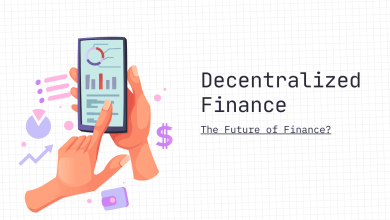Coins vs. Tokens: Understanding the Difference in the Crypto World

- Knowledge is power
- The Future Of Possible
- Hibs and Ross County fans on final
- Tip of the day: That man again
- Hibs and Ross County fans on final
- Spieth in danger of missing cut
In the world of cryptocurrency, you’ll often encounter the terms “coin” and “token.” While they’re sometimes used interchangeably, there are important distinctions between the two. Understanding this difference is crucial for navigating the crypto landscape. This article will clarify what coins and tokens are, how they differ, and provide examples of each.
What is a Cryptocurrency Coin?

A cryptocurrency coin is a digital currency that operates on its own, independent blockchain. Think of it like digital cash, native to its own specific network. Coins are typically used as a medium of exchange, a store of value, or a unit of account within their respective ecosystems.
Key Characteristics of Coins:
- Own Blockchain: Coins have their own dedicated blockchain that records all transactions.
- Native Currency: They are the primary currency of their blockchain.
- Mining or Staking: New coins are usually created through a process called mining (Proof-of-Work) or staking (Proof-of-Stake).
- Utility within their Ecosystem: Coins serve as the “fuel” for their blockchain, used to pay for transaction fees and often participate in network governance.
Examples of Coins:
- Bitcoin (BTC): The original cryptocurrency, operating on the Bitcoin blockchain.
- Ethereum (ETH): The native currency of the Ethereum blockchain, used to pay for gas (transaction fees) and interact with smart contracts. Note: while Ethereum is moving towards being referred to as a platform and Ether (ETH) as its native cryptocurrency, ETH still primarily functions as a coin in the definition given above.
- Litecoin (LTC): A fork of Bitcoin, designed to be faster and cheaper to transact with.
- Monero (XMR): A privacy-focused cryptocurrency with its own blockchain.
- Solana (SOL): Native currency to the Solana network.
What is a Cryptocurrency Token?

A cryptocurrency token, on the other hand, does not have its own blockchain. Instead, it is built on top of an existing blockchain, typically using a smart contract. Think of tokens as digital assets that represent something else – a utility, an asset, a right, or a membership, for example.
Key Characteristics of Tokens:
- Built on Existing Blockchains: Tokens leverage the infrastructure of an existing blockchain (e.g., Ethereum, Solana, Binance Smart Chain).
- Represent Assets or Utility: They can represent a wide range of things, from in-game items to loyalty points to shares in a company.
- Created via Smart Contracts: Tokens are typically created and managed using smart contracts on the host blockchain.
- Dependent on the Host Blockchain: Their functionality and security are dependent on the underlying blockchain.
Types of Tokens:
There are many different types of tokens, categorized by their purpose:
- Utility Tokens: Provide access to a specific product or service within a platform or ecosystem. Example: Basic Attention Token (BAT) is used to reward users and advertisers on the Brave browser.
- Security Tokens: Represent ownership in a real-world asset, such as shares in a company or real estate. They are often subject to securities regulations. Example: tZERO (TZROP) is a security token representing equity in tZERO.
- Governance Tokens: Give holders voting rights in the governance of a decentralized project or protocol. Example: Maker (MKR) holders can vote on proposals related to the MakerDAO stablecoin system.
- Non-Fungible Tokens (NFTs): Represent unique, indivisible assets, such as digital art, collectibles, or in-game items. Each NFT is distinct and cannot be directly exchanged for another. Example: CryptoPunks, Bored Ape Yacht Club.
- Stablecoins: Tokens designed to maintain a stable value, often pegged to a fiat currency like the US dollar. Example: Tether (USDT), USD Coin (USDC).
Examples of Tokens (and their Host Blockchains):
- Chainlink (LINK) (Ethereum): An ERC-20 token used to pay for oracle services on the Chainlink network.
- Uniswap (UNI) (Ethereum): A governance token for the Uniswap decentralized exchange.
- Tether (USDT) (Multiple Blockchains – Ethereum, Tron, others): A stablecoin pegged to the US dollar.
- Decentraland (MANA) (Ethereum): An ERC-20 token used within the Decentraland virtual world.
- Binance USD (BUSD)(Binance Smart Chain): A stable coin.
The Key Difference: Ownership of the Blockchain
The fundamental difference between coins and tokens boils down to blockchain ownership. Coins have their own independent blockchain, while tokens are built on top of an existing blockchain. This distinction has implications for their functionality, security, and how they are created and managed.
Analogy: Think of a Country and its Currency
A helpful analogy is to think of a country and its currency. The country (like a blockchain) has its own infrastructure, laws, and economy. The national currency (like a coin) is native to that country and is used for transactions within it.
Now, imagine gift cards or loyalty points issued by a store within that country. These gift cards (like tokens) are not the national currency, but they have value within the context of that store (the platform built on the blockchain). They rely on the country’s infrastructure (the blockchain) to function, but they are not the country’s currency itself.
Conclusion: Coins and Tokens – Different Roles in the Crypto Ecosystem
Both coins and tokens play important roles in the broader cryptocurrency ecosystem. Coins provide the foundational infrastructure and native currency for blockchains, while tokens offer a wide range of functionalities and use cases built on top of those blockchains. Understanding the distinction between coins and tokens is essential for anyone looking to invest in or interact with the world of cryptocurrency.





